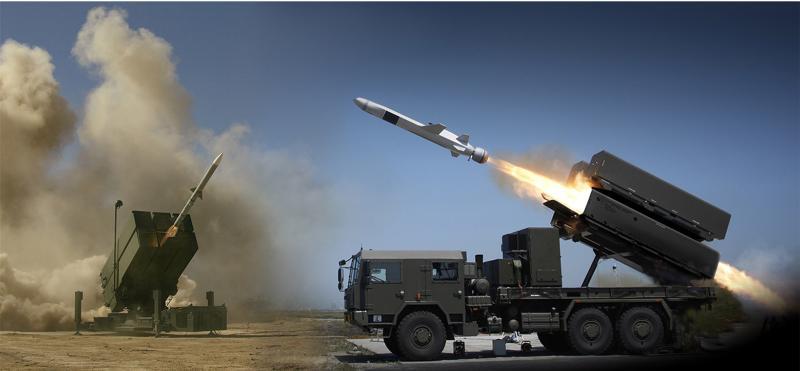CBRNe Incident – A Complex Crime Scene, Part I
By Mr. Kevin Cresswell, Independent Consultant, USA
It’s not what you know – it’s what you can prove! “It is a capital mistake to theorize before one has data.” — Sherlock Holmes (Arthur Conan Doyle), A Scandal in Bohemia. In part one of two articles, Kevin Cresswell identifies the need for first responders at a Chemical, Biological, Radiological, Nuclear and high yield explosive (CBRNe) incident, to be trained in forensic principles to advance the subsequent investigation. Part two of this article will look at laboratory techniques and equipment in this field.
We are seeing a surge in the requirement for forensic experts with adequate preparedness and capacity building at the scene of CBRNe crime investigation. CBRN Forensics is a sub-discipline of forensic science and will have a direct impact on criminal proceedings from the outset of investigation till the accused is convicted in court. Crime scene investigation (CSI) in the context of CBRNe has its own challenges and requirements, it has wider safety implications and consequently higher standards.
So, what is the difference between traditional CSI and CSI in the CBRNe context? CBRNe crime scene investigation is very complex and time consuming compared with traditional CSI. A number of factors play a role that affect the whole chain of custody.
It is crucial that first responders at the CBRNe crime scene do more than just act as material collectors and understand the principles of forensics in order to assist with the advancement of the investigation. Having this competency on initial approach ensures all findings are available for the wider investigation and advancement of forensic specialists.

Compared with a traditional crime scene, the CBRNe crime scene contains hazards that could significantly affect the health and safety of investigators and the validity of evidence collected. Any evidence or sample transferred from a CBRNe crime scene to a laboratory or other suitable evidence storage facility should be accompanied by appropriate records alerting the receiving staff of any risks so they can consider how to safely store and manage them.
It will be necessary to plan for the time to put on protective clothing, traverse in CBRNe suit and breathing apparatus (BA) to the target, detect and identify the source of the threat, removal, complicated handling of traces in protective suits, decontamination of individuals and equipment, deployment times for BA and also the required roulement of officers for the demanding task to hand.
The link between the civil authorities and the military in cross training chemical analysis, can be traced back to 1832 when British police arrested John Bodle for lacing his grandfather’s coffee with poison. Army officer and chemist James Marsh tested the drink in his laboratory and confirmed the presence of arsenic by producing a yellow precipitate of arsenic sulfide, a result of passing hydrogen sulfide through tissue samples. The compound decayed before the trial and the jury was left unimpressed.
Marsh went on to develop a much more sensitive test using acid and zinc to liberate arsine gas from samples, now when he burnt the arsine left behind a telltale silver black residue was left.
Effectively identifying the CBRNe measures used in collected evidence requires not only effective management of the crime scene from the outset, but also uses the very latest in forensic technical solutions. Classical methods are still in play today, but applying specialist equipment provides faster, reliable and accurate performance of specific tests.

In his Georgian era, Marsh was simply attempting to search for a specific chemical. In the Navalny poisoning case in 2020, scientists at the Bundeswehr Institute in Germany performed the tests on samples from Navalny, similar to those used to identify Sarin poisoning. This included mass spectrometry, looking for the poison bound to proteins found in the blood, but chemists would not have known what they were searching for. The polybrominated biphenyls (PBBs) were too low to do things like stable isotope ratios, which can be a fingerprint for nerve agents, impurities which can help investigators determine how the compounds were made got lost between when the toxic chemical was administered and when tests are performed. The fact that they were able to find Novichok, at parts per billion levels, days after the victim’s exposure was a quite remarkable CBRNe forensic feat!

On-site investigation in the CBRNe context must therefore meet high quality standards to maintain the safety of investigators and preserve the evidence, but the recognition, individualization, identification of pieces of evidence collected from the site are still determined in accordance with seven basic principles of forensic science;
Law of Individuality – every object has a unique characteristic; seeds, currency computer, etc. may seem similar, but they never are.
Law of Progressive change – nothing is permanent, and the rate of change varies on different objects.
Principle of Comparison – the need to provide like samples and specimens for comparison.
Principle of Analysis – the need for the correct sampling and packaging of evidence to ensure integrity.
Law of Probability – the chance of occurrence of a particular event in a particular way out of total number of ways in which an event can take place or fails to take place with equal facility.
Law of Circumstantial facts – facts do not lie. The importance of circumstantial facts is good for oral evidence.
Most interestingly of all, is Locards Principal of Exchange. In 1877, Dr Edmond Locard was renowned for being a pioneer in forensic science and criminology. The theory states that “every contact leaves a trace.” Effectively, when two objects come into contact with one another, each will take something from the other object or leave something behind – a fundamental principal of forensics.
The requirement for decontamination adds a further impediment. In 2018 a sleepy cul- de-sac house became Britain’s biggest crime scene in the UK. The cleanup marked the longest deployment by the British Army in Great Britain in its history. In total, 190 members of the British Army and Royal Air Force, supplemented with contract specialists, decontaminated 12 Novichok affected sites.
In addition to the technical challenges of decontaminating urban spaces, the heat of summer made the cleanup challenging. Soldiers were limited to no more than 45 minutes in full protective equipment to reduce heat casualties. Between that restriction and the time required to enter and exit the controlled site and for decontamination, the cleanup progressed slowly. It was a year before all areas were declared free of the nerve agent and decontamination efforts in Salisbury finally came to an end.

The investigator at a CBRNe crime scene is required to apply specialist methods and techniques in the competent handling of hazardous materials to both ensure the security, integrity, and preservation of the evidence for the purposes of investigative processes. Cross training of scientists with CBRNe responders somewhat fills the gap in creating an effective CBRNe Forensics plan and response and will allow the initial responder in the field to appreciate that this is still a crime scene albeit a complex one.
Modern technology of course offers completely new possibilities, as advances in forensic analysis are used to investigate. This significantly facilitates the work of both forensic investigators and responders involved in the work at CBRNe contamination sites and in the laboratory. In part two of this article, we will take a look at CBRNe forensic advancements.










